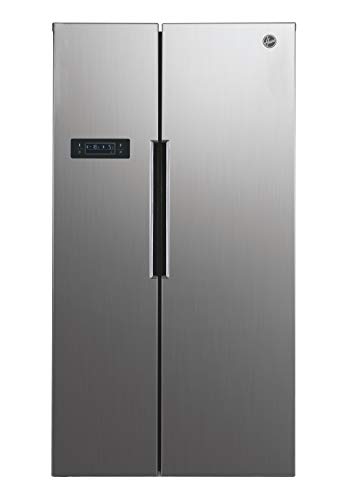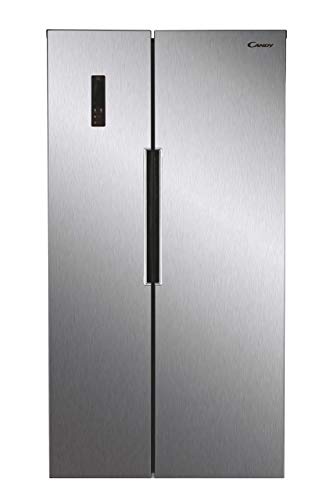벨트 분류
The Leading Reasons Why People Perform Well At The Refridgerator UK Industry
작성자 정보
- Elyse 작성
- 작성일
본문
 The History of the Refrigerator
The History of the Refrigerator The conventional refrigeration of food creates an enormous amount of greenhouse gas emissions due to leakage of refrigerant as well as electrical power consumption. In 2019, these emissions accounted for 3.2 percent of the total UK territorial GHG emissions.
The conventional refrigeration of food creates an enormous amount of greenhouse gas emissions due to leakage of refrigerant as well as electrical power consumption. In 2019, these emissions accounted for 3.2 percent of the total UK territorial GHG emissions.1959 was the first time fridges became common in British homes. Before 1959, the majority of British households relied on cold slabs kept in the pantry. These were inefficient and did not maintain the same temperature.
The History of Fridges In The UK
Fridges are essential kitchen appliances that let us keep food and beverages fresh for a long time. They're also extremely efficient in energy use. It's easy, though, to forget that refrigerators were once a luxury item. It wasn't until 1950s when they started to take off. In the beginning, it was the summer heat of Britain that led to their popularity.
Before refrigerators were invented people used insulated iceboxes in order to keep their food cool. They would gather blocks of ice from lakes in the winter, and then store them throughout the warm months. However, the ice boxes weren't ideal. They had to be carried around by an 'ice man', and they were very heavy. In 1918 the first refrigerators with electric motors were released to the market. But, it took a long time before they were widely used in homes.
Today, fridges are a lot more efficient in terms of energy usage than they were a decade ago. They consume less energy than they used to a decade ago, and some refrigerators consume just 4 kW per day (equivalent to 170 W continuous). The majority of refrigerators used in homes are energy efficient, with a majority with an A+ rating.
Early in the 1950s, manufacturers began to introduce refrigerators that had separate compartments for freezers. The manufacturers also began producing models with a chrome-finished finish, which was very popular at the time. Since the time, refrigerators are now available in many different colours and finishes. Pastel shades, such as turquoise and pink, were popular in the 1960s. Earth-tone colors like avocado green and almond became more popular in the 1980s and the 1970s. By the 90s stainless steel was beginning to take over.
Fridges in the 1920s
Before fridges came along the people would use wooden "ice boxes" to store food and drinks that were fresh. Ice man would deliver blocks of frozen ice to fill them, and they would keep cool throughout the year. These ice boxes could be found in the posh kitchens.
The first electric refrigerator was launched in 1918 and was positioned on top of the home's current refrigerator's ice box. They were large noisy and expensive. The motor was on top of the cabinet. They were also known as monitor-tops. William C. Durant bought out the Mellowes refrigerator company in 1918 and set the Guardian Frigidaire company to mass make refrigerators. Durant was inspired by a design created by Cistercian Monk Marcel Audiffren, and Swiss Engineer Albert Singrun. It was an absorption refrigerator that used sulfur dioxide as the refrigerant.
In the 1920s, these new refrigerators became affordable to many homes. These refrigerators could store more food and drinks and kept them cooler for a longer time than the old ice boxes.
Refrigerator advertisements were imaginative engaging, captivating and full of promises of ice-cold drinks and stylish designs. The ads from the past are fascinating to read as they provide a glimpse into what life was like back then.
By the end of the 1920s, electric refrigeration was almost everywhere in homes. Electric utilities promoted the trend by offering rebates to customers who purchased refrigerators. In the Great Depression, these appliances were considered vital for home survival and their popularity increased.
Fridges in 1950s
The popularity of refrigerators increased in the 1950s. They were not common in the 1920s. By the end of the 1960s, they were common in most homes.
The majority of fridges from the early days were very utilitarian appliances with simple designs that matched the kitchen decor at the time. They were usually smaller fridges with legs visible with a wide range of colors available (though the majority were in the pastels, i.e. mint greens). During this period there were a variety of companies manufacturing fridges, including Whirlpool (who had just made a splash as a leading brand), Gibson, Hotpoint and Tappan.
All of these brands were famous for their high-quality, reliable refrigerators. These brands also offered other types of appliances within their product line. For instance, Crosley was a manufacturer of radios before moving into refrigerators in the 1940's. They were known for their compact refrigerators that fit well into smaller areas.
In the 1950's, fridges became more stylish and were marketed as a status symbol for housewives. They were designed in a manner that was a perfect match to the cabinets and the walls of the kitchen, and were typically white with chrome handles.
In the 1960s, refrigerators began transform into gadgets that included separate freezer sections as well as ice-cube makers. In addition manufacturers began using less expensive materials and were able offer these appliances at much lower prices.
Fridges in the 1960s
In the 1960s, refrigerators were a necessity in a lot of households. Some families even had two refrigerators. They were expensive for a while - in America the average refrigerator cost $600 (that's approximately $7000 in 2024 dollars) - but by the end of the 60s, they had dropped to $200.
The refrigerator was a significant breakthrough in the early days, changing kitchens and changing the way we preserved food. The fridge also improved home comfort as it made meat and dairy fresher for longer, which enabled people to buy in bulk and cook meals in advance and keep them in the fridge to be used later.
Early fridges uk (Get Source) used toxic gases such as ammonia, methyl chloride, and sulfur dioxide for refrigeration, however this was hazardous for humans since these gases were released from refrigerators. A number of people died from poisoning, and it wasn't until in 1929 that a safer method of cooling food using carbon dioxide, was developed.
It allowed manufacturers to create safer and more efficient refrigerators that could be used in homes. Certain refrigerators had an internal freezer that was accessible through the refrigerator's door. These refrigerators were known as bi-door and they were very popular in the 1950s and 1960s.
Fridges in the 1960s were more futuristic than those of today, featuring soft curves and an overall sleek look that suggested an era of convenience and domestic freedom. They were quite large, but the boxy look of refrigerators in the 1940s was beginning to decline.
Refrigerators today
The latest fridge freezers are available in a variety of styles, colours and finishes to suit the personal taste and interior of your kitchen. Some fridge freezers uk come with smart features that are connected to Wi-Fi. This lets you quickly adjust the settings. Some even come with an inbuilt camera that allows you to check inside the refrigerator.
French door models dominate the market, as consumers seek modern features and appearances like dispensers for water or ice and flex drawers. In some cases, smart screens are also included. A lot of these appliances are classified as A, B or even A+ for energy efficiency following the revamping of the labelling system that is mandatory in UK appliances.
This Hotpoint model is a popular choice because of its elegant design. It comes with a clever UVNano self-sterilizing technology that kills bacteria in the fridge freezer cheap. Also, it has two salad drawers with adjustable humidity sliders. It's also big, with plenty of storage room for bottles and jars and Fridges Uk a generous utility box in the door of the fridge.
Find fridges freezers that have the green ICE+ feature that uses less energy. You can also save money by choosing a model that has an automatic ice maker. This will ensure an unending supply of ice, ready to be used in the morning.
The most effective thing you can do to protect the environment is to buy refrigerators that have an energy efficiency rating of A or A+. When you're choosing a fridge freezer on sale it is a good idea also to include the annual power consumption of the fridge into your household budget. It's important to remember that the world isn't a place where we can afford to take electricity for granted: everyone deserves access to affordable, reliable and abundant electricity to live the quality of their lives and protect our planet.
관련자료
-
이전작성일 2025.02.06 12:36
-
다음
댓글 0
등록된 댓글이 없습니다.
